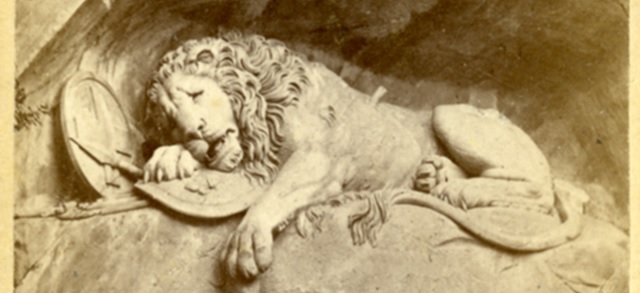
Monuments Class Projects
Architect/Sculptor of Monument
Sir George Gilbert Scott (1811-1873) Henry Weekes (1807-1877)
Preview

Identifier
17a
Medium
photograph, carte-de-viste
Keywords
Martyrs Monument, English Reformation, Mary I of England, Thomas Cranmer, Hugh Latimer, Nicolas Ridley, Roman Catholic Church, Church of England, Anglo-Catholicism, Oxford Movement, Sir George Gilbert Scott, Henry Weekes, Gothic Revival
Physical Dimensions
2.5 x 4"
Date of Publication
c. 1863-1883
Name of Monument
Martyrs Monument
Date of Creation of Monument
1843
Date of Completion or Dedication of Monument
1843
City of Monument
Oxford
Location within City
St Giles
State/Province of Monument
Oxfordshire
Country of Monument
England
Description
The Martyrs Monument in Oxford, England commemorates the martyrdom of Bishops Hugh Latimer, Nicholas Ridley, and Thomas Cranmer, who were leaders of the English Reformation in the mid-16th century. The Monument was completed in 1843 by Sir George Gilbert Scott and Henry Weekes in opposition to the growing Oxford Movement, which sought to bring the Church of England back to its Roman Catholic roots. The monument stands at the bottom of St Giles in Oxford, not far from the site of their execution.
School of Art/Architecture
Gothic Revival Architecture
Publisher
J. Guggenheim
Digital Date
1-19-2022
Copyright
Physical copy of the carte-de-viste is in the public domain. Digital copy scanned by Rod Library @2025 Rod Library, University of Northern Iowa
Creative Commons License

This work is licensed under a Creative Commons Attribution-NonCommercial 4.0 International License
File Format
image/jpeg



Comments
The Martyr's Monument in Oxford, England commemorates the deaths of 3 former bishops of the Church of England: Hugh Latimer (1487-1555), Nicholas Ridley (1500-1555), and Thomas Cranmer (1489-1556). Latimer and Ridley were the Bishops of Worcester and London, respectively, while Thomas Cranmer was the Archbishop of Canterbury. All three of them were burned at the stake for heresy and their participation in the Protestant Reformation in England. Latimer and Ridley were executed together on October 16, 1555, and Cranmer was burned on March 21, 1556. The three of them died during the reign of Queen Mary I, who intended to restore the Catholic faith in England after her father, Henry VIII, broke ties with the Roman church in 1534. The deaths of the three men later inspired many Protestants to continue reform in England and they are now remembered as martyrs of the Reformation. Immediately after the death of Queen Mary I in 1558, England returned to reforming the church and has ever since remained an officially Protestant nation.
The Martyrs Monument was completed in 1843 by the architect Sir George Gilbert Scott (1811-1873). Scott was a very successful architect during the Victorian era who was known for his Gothic Revival buildings. Some of this work includes the Wakefield Cathedral, St. Mary’s Cathedrals in Edinburgh and Glasgow, and the Midland Grand Hotel in London. Scott began his work on the Martyrs Monument in Oxford in 1841 and designed the monument after a medieval market cross, although it also resembles a church spire. Henry Weekes (1807-1877) sculpted the three statues of Latimer, Ridley, and Cranmer, which were some of his earliest commissioned works. He later would go on to be one of the best known sculptors of the Victorian era. Weekes later created a statue of Francis Bacon for Trinity College in Cambridge and worked with Scott again on London's Albert Memorial later in his career.
The Martyrs Monument was erected in opposition to the Oxford Movement, which was led by a group of high church clergymen in the Anglican Church, most notably John Keble and John Henry Newman, who has since been canonized as a saint in the Roman Catholic Church. The Oxford Movement eventually developed into Anglo-Catholicism, and some of its leaders, most notably Newman, eventually converted to Roman Catholicism.
The Martyrs Monument serves as both a reminder of the foundational ideas of the English Reformation and the persecution suffered at the hands of a Catholic queen in the 16th century. There is an engraving on the base of the memorial that names the three men burned at the stake and honors their willingness to suffer a brutal death for the sake of the Reformation. The Martyrs Monument stands tall in Oxford to serve as a symbol of the bravery of English clergymen in the face of persecution during the Protestant Reformation.